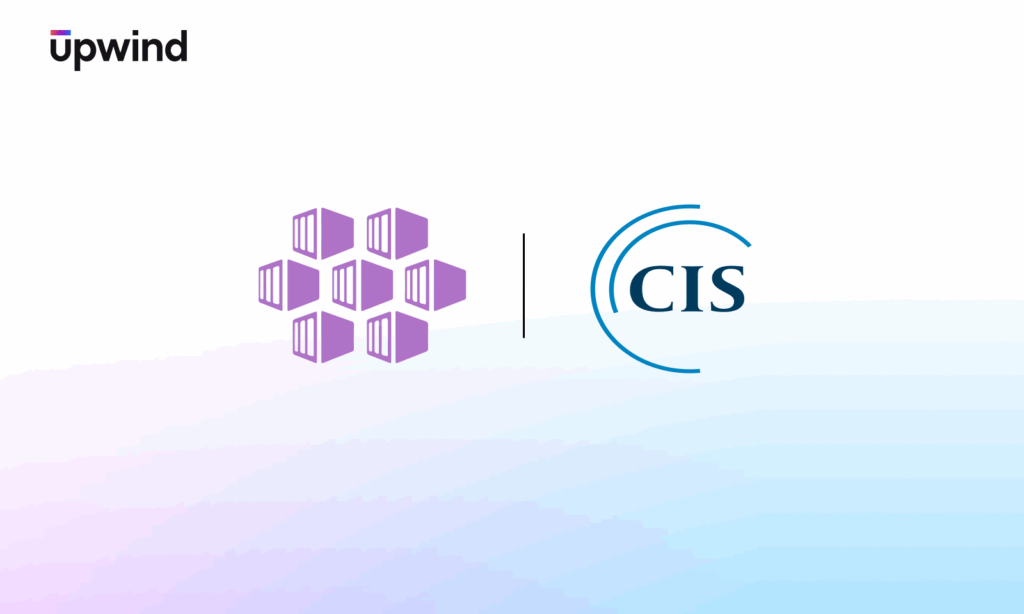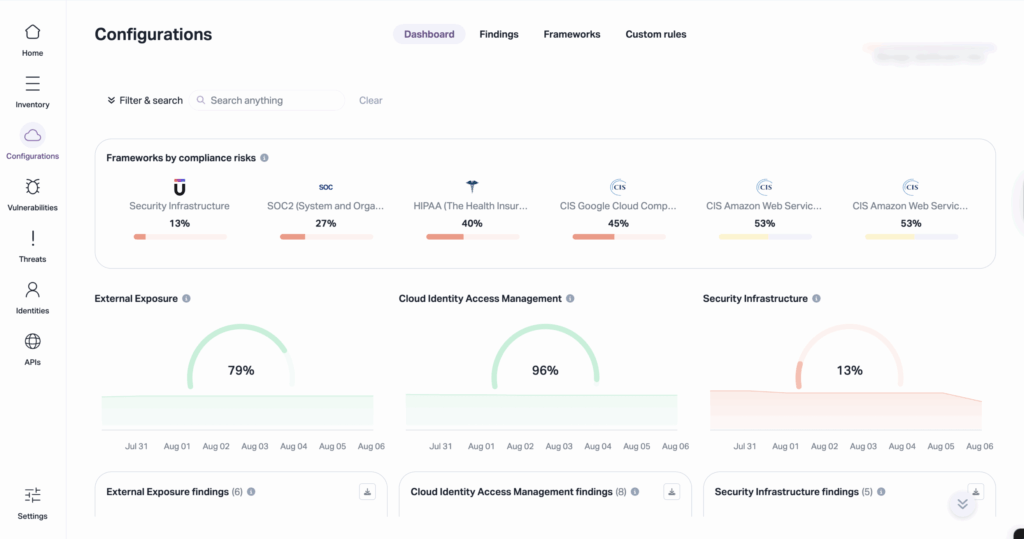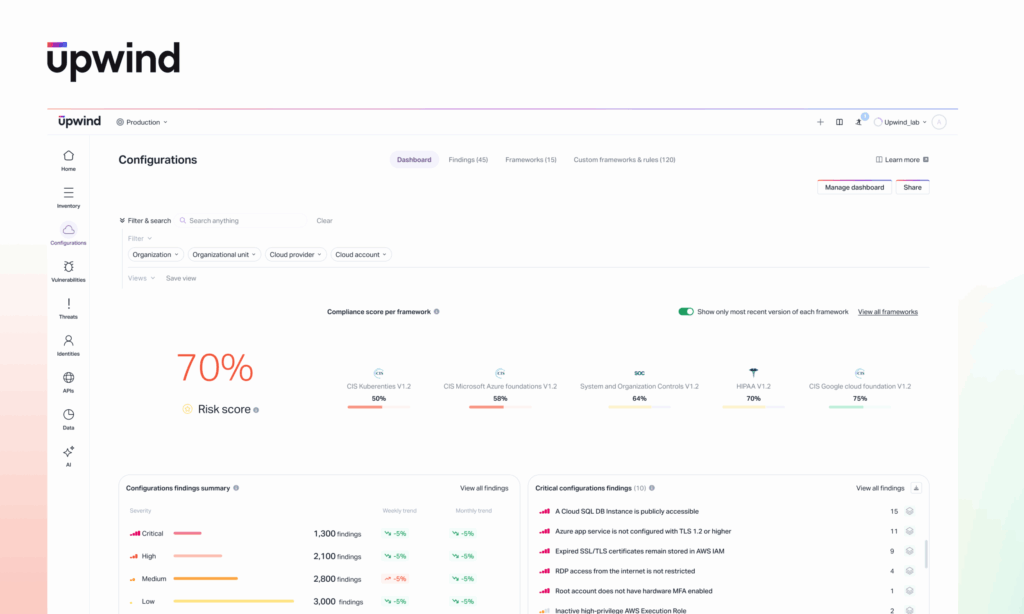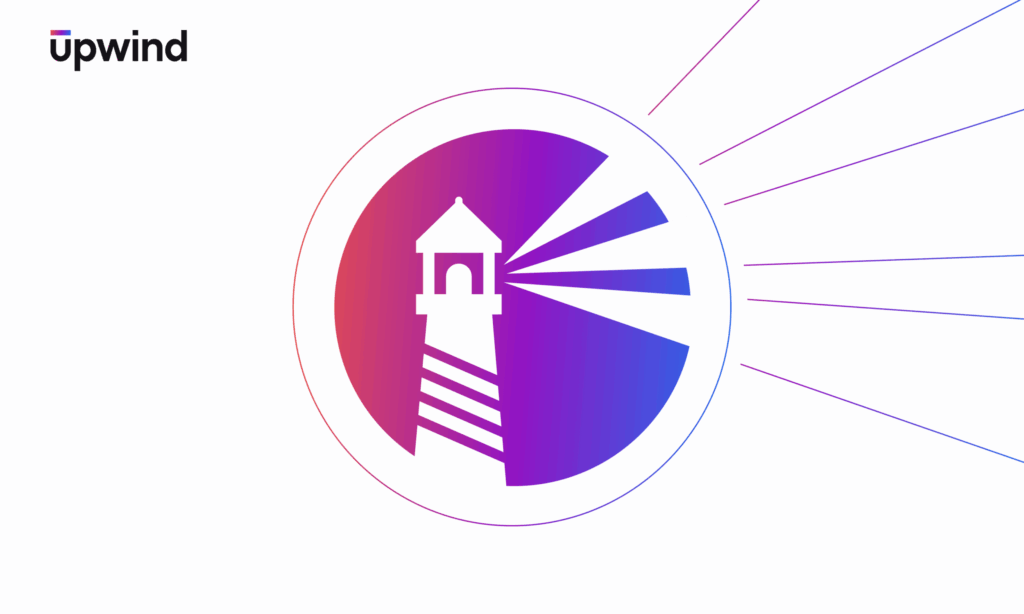
Upwind Delivers Faster Time-To-Value for CIS AKS
We’re excited to announce that Upwind now supports the Center for Internet Security (CIS) benchmark for Azure Kubernetes Service (AKS), helping security and compliance teams move faster with ongoing posture checks, active threat detection, and automated enforcement. With this release, customers can apply the same runtime-aware compliance capabilities already used across frameworks such as HIPAA, SOC 2, and ISO/IEC 27001, now extended to Azure Kubernetes environments.
What Are CIS Benchmarks?

The CIS Benchmarks are a set of industry-recognized best practices developed by the Center for Internet Security to help organizations secure systems and applications. They provide actionable configuration guidance for a wide range of technologies, including cloud platforms, operating systems, and container orchestration tools like Kubernetes.
While CIS Benchmarks are a proven way to reduce risk and meet compliance objectives, implementing and maintaining alignment with them is challenging in dynamic cloud environments. Static scans capture a snapshot in time, but miss posture drift caused by new deployments, infrastructure changes, or misconfigured permissions. Security teams are often left unaware of new gaps until the next scheduled assessment, creating exposure windows that attackers can exploit.
Modern cloud-native environments demand continuous validation. In Kubernetes, where clusters, pods, and configurations change rapidly, CIS compliance must evolve from a periodic checklist to a real-time control system. A modern compliance mechanism must automatically detect misconfigurations as they occur and alert teams before those issues become security gaps.
What Is CIS AKS?
CIS AKS is the specific benchmark for securing Microsoft Azure Kubernetes Service. It provides guidance on securely configuring the components of AKS across several domains, including:
- Cluster and node configuration
- Kubelet and API server settings
- Kubernetes RBAC and Azure IAM integration
- Pod security policies and network segmentation
- Logging, auditing, and visibility controls
Adopting CIS AKS helps organizations reduce their Kubernetes attack surface, enforce least privilege, and align with broader regulatory requirements such as PCI-DSS, NIST 800-53, and FedRAMP.
However, achieving and maintaining compliance with CIS AKS is not straightforward. The benchmark applies across multiple layers of the Azure and Kubernetes stack, and continuous change across these layers makes it difficult to monitor manually or with periodic scanning tools.
How Upwind Enables Real-Time CIS AKS Compliance
With the addition of CIS AKS benchmark support, Upwind enables organizations to continuously validate AKS posture while also incorporating real-time context from workloads and infrastructure. This helps security teams detect and respond to compliance drift as it happens, rather than after the fact.
Key capabilities include:
- Continuous Misconfiguration Monitoring
Upwind continuously scans your AKS environment for CIS benchmark violations without requiring manual tuning. Misconfigurations, insecure settings, or risky role assignments are surfaced immediately, enabling faster remediation. - Historical Context and Posture Drift Analysis
Upwind captures changes over time, allowing you to pinpoint when a specific misconfiguration occurred, which assets were affected, and what triggered the drift. This helps teams understand the root cause of compliance failures and prevents repeat issues. - Real-Time Risk Prioritization
Static posture data can lead to noise. Upwind incorporates live workload and process-level context to distinguish between theoretical misconfigurations and active threats. This reduces false positives and allows teams to focus on the highest-impact risks. - Unified Compliance Dashboard
Upwind presents a unified view of your CIS AKS compliance posture alongside other standards and benchmarks, helping organizations manage multiple frameworks through a single platform.
Final Thoughts
Security benchmarks like CIS AKS provide a valuable foundation for hardening Kubernetes environments in Azure. While CIS AKS may seem straightforward at first glance, actually applying its controls in dynamic cloud-native environments requires more than a one-time audit. It requires continuous visibility, automated enforcement, and the ability to prioritize based on real risk. By extending our runtime-aware security and compliance capabilities to CIS AKS, Upwind helps organizations keep pace with change, reduce manual overhead, and maintain strong, auditable posture across their Kubernetes environments.
Learn More
Upwind helps organizations achieve faster time-to-value with CIS AKS by combining real-time monitoring, contextual risk analysis, and continuous compliance tracking. Schedule a demo or drop us a line at [email protected] to learn more.




